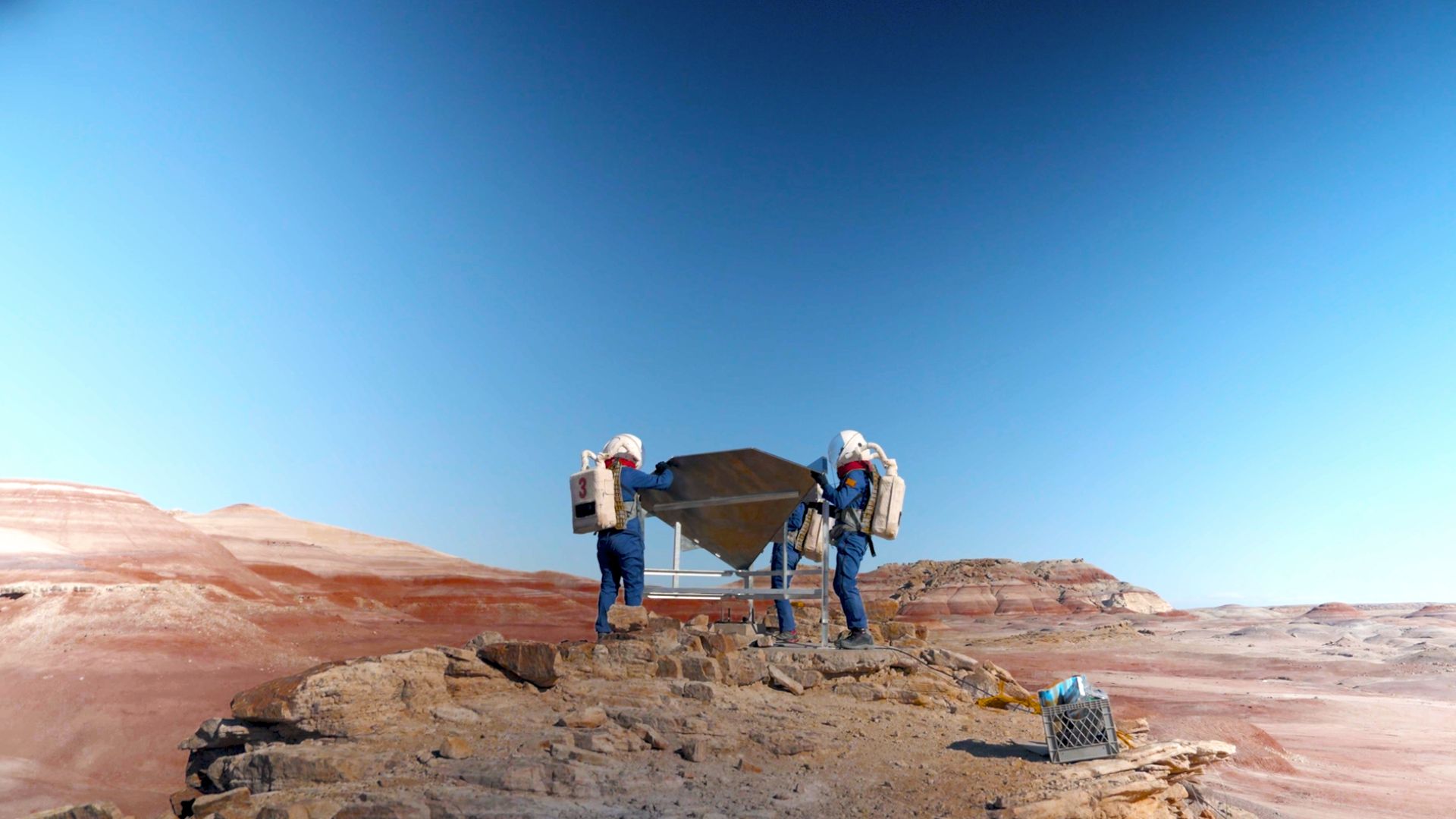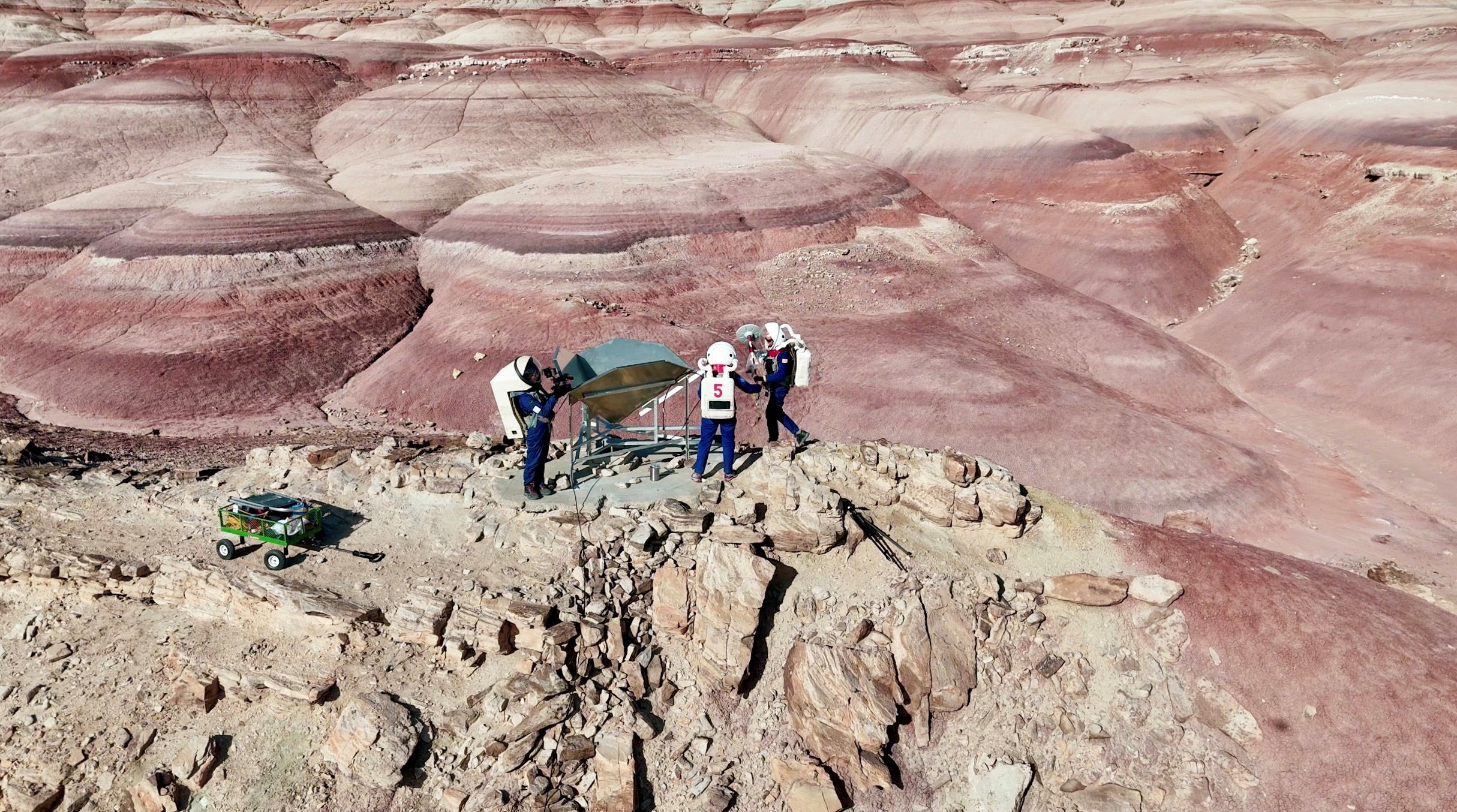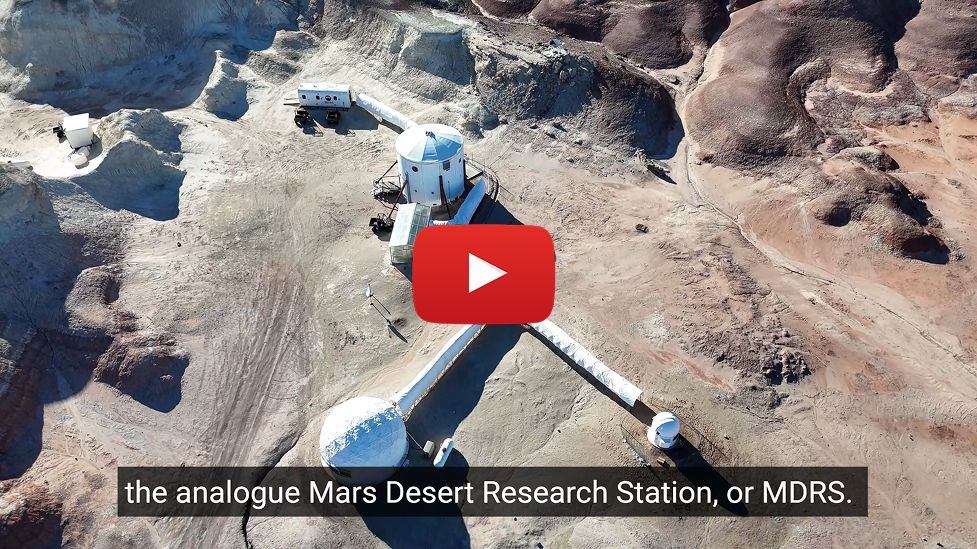The first successful results of the calibration site installed at the Mars Desert Research Station (MDRS) show the potential of the infrastructure to reinforce Sentinel-3 calibration network.
The system was ready since 14 February, carrying out a first test with a Sentinel-3B overpass. Subsequent passes show very positive results, as seen in the Sentinel-3B of 6 May, which recorded exceptional signal reflection characteristics, with radar cross-section measurements matching expected values.
As more data will be collected over time, this permanent infrastructure will allow a long-term monitoring of the Sentinel-3 radar altimeters performance, as well as other satellite missions.
 Hypatia II crew installing the corner reflector. © Marta Ferrer.
Hypatia II crew installing the corner reflector. © Marta Ferrer.
This corner reflector installed at the Mars Desert Research Station represents a new addition to the the network of Sentinel-3 calibration sites. Thanks to its geographical location, it will also strengthen the global network of corner reflectors for satellite altimeter calibration, providing data from a new longitude.
The corner reflector has been developed by isardSAT and funded by the European Space Agency - ESA, as an extension of the Sentinel-3 Land Altimetry Mission Performance Cluster Service project. It has been installed and set up by Hypatia II crew, as part of the second mission of Hypatia Mars, a female-led organisation dedicated to advancing Martian research and outreach.
 Hypatia II manipulating the GNSS station. © isardSAT
Hypatia II manipulating the GNSS station. © isardSAT
Mònica Roca i Aparici, one of the crew members of Hypatia II and co-founder of isardSAT, a Barcelona-based enterprise provider of EO solutions, explains that “with this initiative, we have been able, on the one hand, to consolidate innovative satellite calibration methodologies. And, on the other hand, to take a step further towards defining how satellite calibration beyond Earth could work”.
